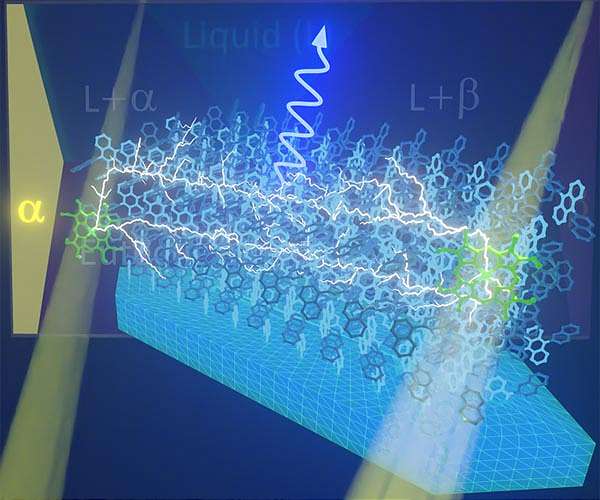Molecular relay structure makes faster photon -up conversion possible for solar and medical use
A new molecular architecture developed by researchers at Kobe University accelerates light conversion by making faster intramolecular energy movement possible. This progress could pave the way for more efficient solar energy technologies and improved medical diagnostics.
Foton Upconversion, a process in which two light energy light particles combine into one higher energy yield, promises for applications from photovoltaic to targeted therapies. However, the method usually depends on rare and inefficient molecular collisions with precise alignment. Researchers have sought ways to improve both the reliability and the efficiency of this process.
Under the leadership of photoscientist Kobori Yasuhiro, the KOBE team came up with a molecule that considerably increases the chance of successful energy manual events. By arranging three anthracene molecules around a central drill atom, the team created a structure where an excited state, or triplet excitone, can quickly jump between the anthracens. This internal hopping increases the effective interaction space and maintains energy levels, so that the energy merger is known as triplet-triplet destruction-lake probably during molecular encounters.
“Our analysis clarifies how absorbed energy moves and transforms the molecule,” said Kobori. “This concept can guide the design of more effective upconverters.”
Reported in Angewandte Chemie International Edition, the new molecular configuration showed a 20% faster speed of triplet fusion compared to earlier designs. The hopping speed of the triplet exciton exceeded the typical duration of molecular collisions, which improves the orientation match that is needed for up conversion.
Moreover, the researchers discovered that luminescence -efficiency can be coordinated by adjusting the viscosity of the medium. A more viscous environment reduces both molecular encounters and exciton mobility in the molecule. This opens the possibilities for the use of up conversion -luminescence to study cellular micro environments.
By showing how internal energy mobility can be designed for better efficiency, the KOBE team proposes a broader design strategy that can lead to new classes of powerful upconverters. Kobori said: “We expect that this development can contribute to solving global energy problems, and to extend to a wide range of areas such as cancer therapy and diagnostics, by using harmless low-energy light and in-situ upconversion.”
Research report:Vibronic trimer design improve intramolecular triplet exciton hopping to speed up the destruction of the triplet triplet for photon upconversion

